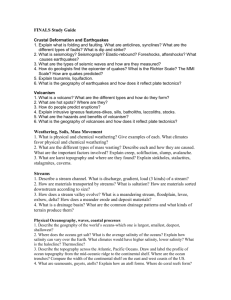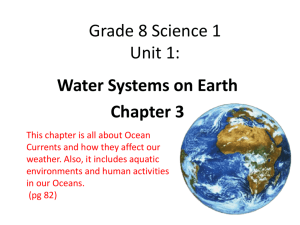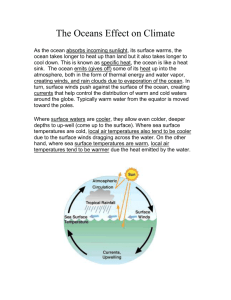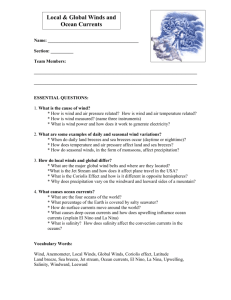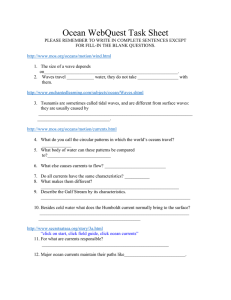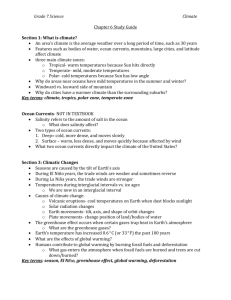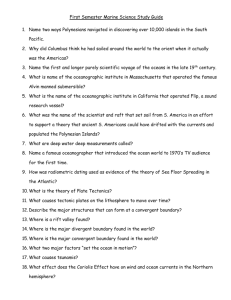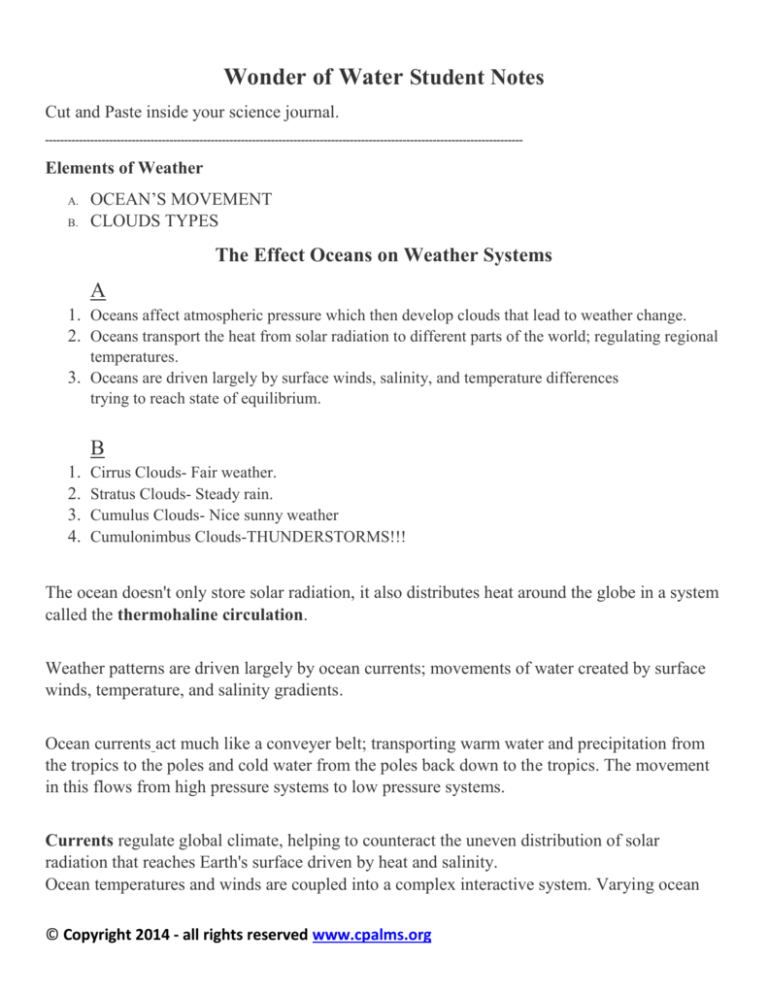
Wonder of Water Student Notes
Cut and Paste inside your science journal.
-------------------------------------------------------------------------------------------------------------------------------
Elements of Weather
A.
B.
OCEAN’S MOVEMENT
CLOUDS TYPES
The Effect Oceans on Weather Systems
A
1. Oceans affect atmospheric pressure which then develop clouds that lead to weather change.
2. Oceans transport the heat from solar radiation to different parts of the world; regulating regional
temperatures.
3. Oceans are driven largely by surface winds, salinity, and temperature differences
trying to reach state of equilibrium.
B
1.
2.
3.
4.
Cirrus Clouds- Fair weather.
Stratus Clouds- Steady rain.
Cumulus Clouds- Nice sunny weather
Cumulonimbus Clouds-THUNDERSTORMS!!!
The ocean doesn't only store solar radiation, it also distributes heat around the globe in a system
called the thermohaline circulation.
Weather patterns are driven largely by ocean currents; movements of water created by surface
winds, temperature, and salinity gradients.
Ocean currents act much like a conveyer belt; transporting warm water and precipitation from
the tropics to the poles and cold water from the poles back down to the tropics. The movement
in this flows from high pressure systems to low pressure systems.
Currents regulate global climate, helping to counteract the uneven distribution of solar
radiation that reaches Earth's surface driven by heat and salinity.
Ocean temperatures and winds are coupled into a complex interactive system. Varying ocean
© Copyright 2014 - all rights reserved www.cpalms.org
temperatures affect local atmospheric pressure, creating wind patterns that drive oceanic
currents to affect surface temperatures.
Acting as a climate and weather moderator, surface temperature of the ocean affects air
temperature over land. Cooler ocean currents and higher specific heat (amount of heat per unit
of mass required to raise the temperature by one degree Celsius) of water leads to a minimal
temperature fluctuation.
© Copyright 2014 - all rights reserved www.cpalms.org



